At its core, a security gate access control system is the brain that tells your physical gate what to do. It’s the technology that decides who gets in, who stays out, and when. This turns a simple barrier into an intelligent gatekeeper, one that grants or denies access based on a set of rules you create. The result is better security, complete control, and a detailed log of everyone who comes and goes.
What Is a Gate Access Control System?
Think about a standard lock and key. A physical key works, but it’s a clumsy solution. Keys can be lost, stolen, or copied without you ever knowing, and there’s no way to track when they’ve been used. A gate access control system is the modern answer to this problem, offering far more intelligence and control. Instead of a metal key, it uses credentials like a PIN code, a key card, or even your smartphone.
The gate itself is the muscle—it provides the physical barrier. The access control system is the brain, making smart decisions in real time to manage the flow of people and vehicles with total precision.
More Than Just a Gate Opener
It’s easy to confuse an access control system with a simple gate opener, but they are worlds apart. A basic opener just responds to a button press without asking any questions. An access control system, on the other hand, authenticates every single user before it takes action.
This is the key difference that elevates it from a tool of convenience to a powerful security solution. The system is programmed to recognize authorized users and automatically turn away anyone who isn’t on the list. This creates a secure, manageable, and auditable perimeter for any property.
The whole process works in four simple steps:
- Verification: The system confirms the identity of the person or vehicle at the gate.
- Authorization: It then checks if that user has permission to enter at that specific time.
- Action: If everything checks out, it instructs the gate operator to open.
- Logging: Every event is recorded—both successful entries and failed attempts—for you to review later.
This digital record-keeping is a massive advantage. It creates an invaluable audit trail, giving you clear, time-stamped data that can be used for investigating an incident, checking compliance, or just understanding traffic patterns on your property.
Creating a Controlled Environment
For a residential community, this means seamlessly welcoming residents and their guests while keeping potential intruders at bay. For a commercial facility, it’s about protecting valuable assets by making sure only authorized employees and approved vendors can get on site.
Modern systems, like those found in advanced Cellgate access gate control technology, give you robust tools to manage all these permissions from anywhere. No matter the application, the goal is the same: to transform a simple entry point into a smart, responsive security asset.
The Building Blocks of a Modern Access System
To really get a handle on security gate access control, you have to see it as a complete ecosystem, not just a bunch of parts. Think of it like a body's central nervous system—every component has its own job, but they all work together to do one critical thing: control who gets in. Understanding how these pieces connect is the first step to building a security perimeter you can actually rely on.
At its core, every system is built from the same fundamental hardware and software. This interconnected framework is what lets a gate make smart, split-second decisions based on the rules you set.
The Hardware: The Gate Operator and Control Panel
The most obvious part of any setup is the gate operator. This is the motor—the "muscle"—that does all the heavy lifting of opening and closing the gate. Whether it’s a swing, slide, or barrier arm, this piece provides the raw power.
But power without direction is chaos. That’s where the most important piece of hardware comes in: the access control panel. This is the "brain" of the whole operation. It’s a central hub that stores user permissions, reads signals from the entry devices, and tells the gate operator what to do. When someone swipes a card or punches in a code, the panel is what checks it against its database and decides whether to grant or deny access. To learn more, check out our detailed guide on different types of gate operators.
Sensing and Identifying Users
Credential readers act as the system's "senses." These are the devices you install at the entry point that people interact with directly. They come in a few common forms, each designed for a different way of identifying someone.
- Keypad Readers require a user to enter a specific Personal Identification Number (PIN).
- Card or Fob Readers use proximity tech to scan a credential held nearby.
- Biometric Scanners identify unique traits like fingerprints or facial features.
- Intercom Systems allow for two-way communication to verify visitors from a distance.
These readers take a user's request for access and zap that information over to the control panel for a decision. Without them, the brain would have no idea who is at the gate.
The Keys and the Command Center
A credential is just the modern version of a key. It's the unique identifier that a user presents to the reader, whether it's a physical RFID key card or a digital token on their smartphone. The type of credential you choose has a big impact on both security and day-to-day convenience.
Finally, the management software is your command center. This is the user-friendly interface that lets you manage the entire system. From here, you can add or remove users, set access schedules for different people, and look back at activity logs to see who came and went.
Modern software platforms are often cloud-based, giving you the power to manage your property's security from anywhere in the world. This is a huge advantage for property managers juggling multiple sites or homeowners who travel.
This visual map shows how the core pieces—security, control, and auditing—all plug back into the central system.
As the infographic shows, a modern system isn't just a barrier; it's an integrated solution built for security and control while giving you a complete audit trail. It’s no surprise the market for this technology is booming. The global access control gates market was valued at around USD 3.5 billion in 2023 and is projected to hit USD 6.8 billion by 2032. That kind of growth shows a clear demand for smarter, more connected security across the board.
Comparing Your Gate Access Options
Once you have the physical gate picked out, the next big decision is how people will actually open it. This choice is huge—it shapes the daily experience for everyone using the gate and sets the real security level for your property. Think of it like the lock on your front door; you can go with a simple key, a deadbolt, or a smart lock, and each one offers a different blend of convenience and protection.
The world of security gate access control systems has something for everyone, from basic keypads to slick smartphone apps. Getting to know the real-world pros and cons of each one will help you find the perfect match, whether you're securing a small residential community or a bustling commercial facility.
Keypad Entry PIN Codes
Keypads are the classic, straightforward option. Someone walks up, punches in the right Personal Identification Number (PIN), and the gate swings open. It’s simple and means nobody has to carry a physical key or card that could get lost.
But that simplicity is also their biggest drawback. PIN codes are easy to share, easy to forget, and can even be spotted by someone looking over a shoulder. Because of this, keypads work best in lower-security settings or as a backup option for visitors and temporary staff.
Card and Fob Readers
Proximity cards and key fobs are a serious upgrade in security. These systems rely on Radio-Frequency Identification (RFID), letting users just wave their card or fob near a reader to get in. There's no physical contact, just a quick, seamless verification.
This method brings a few key advantages:
- Tighter Security: Unlike a PIN, a physical card is much harder to copy or share.
- Simple Management: If a card gets lost or an employee leaves, you can deactivate it in seconds, making it useless.
- Clear Audit Trails: The system logs every entry, so you always have a record of who came and went, and when.
These readers are a perfect fit for places that need both solid security and smooth traffic flow, like apartment buildings, corporate offices, and industrial parks. Modernizing your property with electric gates for driveways that use this technology can significantly boost both safety and property value.
The real power of a modern access control system lies in its ability to be part of a larger, intelligent ecosystem. It's not just about the gate anymore; it's about integrated security.
Intercom and Video Systems
When you need to screen visitors, nothing beats an intercom. These systems create a direct line of communication between someone at the gate and a person inside, whether it’s a resident or a front desk manager. A basic audio system lets you talk, while a video intercom adds that all-important visual confirmation.
This technology is a game-changer for:
- Residential Communities: Homeowners can see and speak with guests before letting them in, all from the comfort of their home.
- Commercial Buildings: Receptionists can manage deliveries and appointments without ever leaving their desk.
Video systems, especially, act as a strong deterrent. They provide an invaluable record of every person who approaches your gate, adding a critical layer of awareness to your security setup.
Smartphone Mobile Credentials
The new gold standard in access control is your smartphone. This technology turns a phone into a key, using Bluetooth or a cellular connection to let a resident or employee open the gate right from an app. In many cases, they don’t even have to take their phone out of their pocket.
This approach delivers the best of both worlds: ultimate convenience and top-tier security. People rarely share their phones, and most are protected by a passcode or face ID, creating a natural form of multi-factor authentication. For property managers, issuing or revoking access is instant and can be done remotely, which is perfect for managing a large community or a dynamic workforce.
This shift to mobile is no small trend. The global access control market is projected to explode from USD 19.05 billion in 2025 to USD 61.31 billion by 2035, a surge driven mostly by mobile credentials and cloud-based systems. This massive growth shows a clear move away from standalone hardware toward smarter, fully connected security solutions.
Comparison of Gate Access Control Methods
To make the choice clearer, here’s a simple breakdown of how these common access methods stack up against one another.
| Method | Primary Use Case | Security Level | Convenience |
|---|---|---|---|
| Keypad (PIN Code) | Guest access, low-traffic areas | Low | Moderate |
| Card/Fob Reader | Employee & resident access, high-traffic areas | Medium-High | High |
| Intercom/Video System | Visitor management, verified guest entry | High | Visitor-centric |
| Mobile Credential | All-purpose access for residents & employees | Very High | Very High |
Each technology has its place. The key is to think about who needs access, how often they need it, and what level of security and convenience makes the most sense for your property’s unique demands.
The True Value of a Smarter Gate System
Sure, a locked gate keeps people out, but a modern access system does so much more. It delivers real, tangible benefits that pay you back long after installation. While security is always the top priority, the real magic happens in the background with improved efficiency and valuable data. It turns a simple gate from a passive barrier into an active tool that makes your daily operations smoother and protects your bottom line.
One of the biggest wins is the boost to operational efficiency. When you automate entry for employees or residents and set clear rules for visitors, you don't need someone watching the gate 24/7. This frees up your staff to handle more important tasks instead of manually checking people in and out.
From Gatekeeper to Data Hub
Picture a busy industrial site with a constant flow of delivery trucks and vendors. Instead of a guard with a clipboard, a security gate access control system can manage everything. The facility manager can issue temporary credentials that only work during a specific delivery window.
This approach solves tricky logistical problems with total precision:
- Scheduled Access: Vendors can only get in during their assigned time slot, which prevents traffic jams at the gate.
- Instant Deactivation: As soon as their job is done, their access credential expires automatically. No loose ends.
- Reduced Labor: The need for a dedicated guard to manage the gate is either minimized or completely eliminated.
This automated system doesn't just make the property more secure—it makes the whole process easier for everyone involved.
Every single action—a successful entry, a denied attempt, even a gate left open too long—is logged. This creates a priceless, time-stamped audit trail that's critical for incident investigations, compliance, and just understanding your property's traffic patterns.
This digital record gives you undeniable proof of who was on your property and when. If something happens overnight, you can instantly pull a report showing every single access event. That's a level of detail you could never get with old-school locks and keys.
Enhancing Property Value and Convenience
It’s not just for commercial sites, either. These systems bring a ton of value and convenience to residential communities. For an HOA, juggling access for hundreds of residents, their guests, and service providers can be a total nightmare. A smart gate system makes it simple.
A resident, for example, can grant temporary access for a package delivery right from their smartphone. The courier gets a one-time code, the system logs their entry and exit, and the resident receives a notification. It's more secure and provides the kind of seamless convenience that people expect today.
This blend of better security and modern functionality directly translates to higher property values. A secure, well-managed community is a huge selling point for potential buyers and renters, making the investment in a quality access system a smart financial move. In the end, a smarter gate system works for you, delivering not just security, but efficiency, oversight, and real value.
How to Choose the Right System for Your Needs
Picking the right security gate access control system isn’t about chasing the “best” technology. It’s about finding the perfect solution that fits the unique rhythm of your property. What works for a quiet residential community will be completely different from what a bustling commercial complex needs. The key is to start by really looking at your specific environment and goals.
This practical approach ensures you get a system that doesn’t just boost security but also supports the daily flow of people and vehicles. Making the right choice upfront saves you from future headaches and makes sure your system is a valuable asset, not a daily frustration.
Defining Your Property Profile
Before you even think about hardware or software, you need to build a clear profile of your property’s needs. The biggest difference between residential and commercial requirements usually boils down to two things: traffic volume and the variety of people coming and going.
For a residential community, the main goal is giving homeowners easy access while securely managing visitors. A system that’s intuitive, reliable, and user-friendly for residents is non-negotiable. Durability is also a big deal since the gate will be used every single day by the same group of people.
On the other hand, a commercial or industrial site has much more complex demands. These properties often need systems that can scale up as the business grows, provide solid reports for compliance, and connect with other security platforms like CCTV and alarm systems. The system has to handle a much higher volume of traffic—employees, vendors, delivery drivers, and clients—with each group needing different levels of access.
A critical first step is to map out every type of user who will need access to your property. This includes residents, employees, regular vendors, delivery services, and occasional guests. Understanding this mix will directly inform the type of credentials and management features you need.
Key Questions to Guide Your Decision
To narrow down your options, it helps to work through a practical checklist. Your answers will create a blueprint for the perfect system, helping you explain your needs clearly to providers and judge their proposals.
Consider these essential factors:
- Daily Traffic Volume: How many vehicles and pedestrians will be coming in and out each day? A high-traffic spot needs a system built for speed and reliability to prevent bottlenecks.
- User Management: How many users do you need to manage? A system for a small office with 20 employees has totally different needs than a residential complex with 500 homes.
- Visitor Protocol: How do you want to handle visitors? Do you need an intercom system to verify guests, or are pre-authorized temporary codes good enough?
- Integration Needs: Does the access control system need to connect with your existing security cameras, alarm panels, or building management software? A unified security network gives you much better visibility and control.
- Future Growth: Do you expect to expand your property or add more users in the next five years? Choosing a scalable system now will save you from a costly replacement down the road.
Thinking Globally and Acting Locally
As you look at different technologies, it’s smart to understand the bigger trends shaping the industry. For example, while North America has historically been the biggest market, Asia-Pacific is now the fastest-growing region for access control systems. This boom is driven by massive investments in smart city projects and rapid urbanization, with some forecasts showing annual growth rates topping 10%. All that global demand pushes innovation forward, leading to better, more powerful systems for everyone. You can discover more insights about these global access control trends.
Understanding this context helps you make a future-proof investment. While your immediate needs are local, picking a system from a provider who keeps up with worldwide tech advancements ensures your solution won’t feel outdated in a few years. It’s all about balancing today’s needs with tomorrow’s possibilities, making sure your security gate access control systems deliver real, long-term value.
Ensuring Long-Term Reliability and Performance
A top-tier security gate access control system is only as good as its installation and upkeep. Investing in advanced technology is the first step, but making sure it operates flawlessly for years to come requires a proactive approach to its health. Professional installation isn't just a recommendation—it's the non-negotiable foundation for long-term performance and security.
This process goes far beyond just mounting the hardware. A proper site assessment identifies potential headaches with grading, power sources, and traffic flow before they become real problems. The right configuration ensures every component, from the gate operator to the credential readers, communicates seamlessly, creating a reliable and secure ecosystem from day one.
Building a Proactive Maintenance Routine
Once your system is up and running, preventive maintenance becomes your best friend. Thinking of this as a recurring task, not an afterthought, is the key to avoiding unexpected failures and those dreaded emergency repair bills. A simple, practical schedule protects your investment and keeps your security perimeter solid.
A well-structured maintenance plan should include:
- Routine Hardware Inspections: Regularly check for physical wear and tear on the gate itself, the operator arm, hinges, and sensors. Keep an eye out for rust, loose connections, or obstructions that could get in the way of movement.
- Software and Firmware Updates: Consistently apply updates provided by the manufacturer. These patches often contain critical security fixes to guard against new vulnerabilities and help the system run more efficiently.
- Data Management Best Practices: Periodically audit your user database to remove old or unused credentials. This simple practice, often called access control hygiene, prevents security gaps left by former employees or residents.
Think of maintenance not as a cost, but as an investment in dependability. A well-maintained system is far less likely to fail during a critical moment, ensuring it remains a trustworthy asset that protects your property, people, and operations around the clock.
This consistent attention to detail is what makes the difference. For property managers looking to get the most out of their equipment, our guide offers valuable tips to maximize the life of your automatic gate installation. Ultimately, a commitment to professional installation and diligent maintenance ensures your security gate access control system delivers the performance you expect, year after year.
Common Questions About Gate Access Control
As you dig into the world of security gate access, a few practical questions always seem to pop up. It’s natural to wonder about the “what-ifs.” Getting these common concerns out of the way is the best way to feel confident about the system you choose for your property. Let's tackle some of the most frequent ones with clear, straightforward answers.
What Happens If the Power Goes Out?
A power outage is a top worry for many, but modern systems are built for exactly this scenario. High-quality gate access control systems come standard with battery backups. The moment utility power cuts out, these backups kick in automatically, keeping the gate running for a set period.
This means residents or employees can still get in and out without a hitch. Beyond that, systems are designed with either fail-safe or fail-secure locks. A fail-safe lock unlocks during an outage to ensure no one gets trapped, while a fail-secure lock stays locked to maintain security, opening only with a manual key or backup power.
Can This System Work with My Existing Security?
Absolutely. One of the biggest advantages of a modern gate access control system is how well it plays with other security platforms. Think of it not as a standalone gadget but as a key player on a larger security team.
By connecting your gate system with video surveillance, alarm panels, and building management software, you create a unified and more powerful security ecosystem. This integration allows for smarter, automated responses to security events.
For instance, when someone uses the gate, the system can tell a nearby camera to start recording. If an unauthorized person tries to get in, it can instantly notify your alarm company and ping your phone with an alert. This seamless teamwork turns separate tools into a single, highly responsive security force.
Are Mobile and Cloud-Based Systems Actually Secure?
It’s a fair question. With everything connected online, the security of digital systems is more important than ever. The good news is that the companies behind today’s mobile and cloud-based access control platforms are obsessed with cybersecurity. They build in multiple layers of protection to shield your data and your property from digital threats.
These security measures almost always include:
- Data Encryption: All the information flying between your phone, the cloud, and the gate controller is scrambled, making it completely unreadable to anyone who isn't supposed to see it.
- Multi-Factor Authentication (MFA): Many systems require a second proof of identity—like a fingerprint scan or a temporary code—on top of a password. This makes it incredibly difficult for an intruder to gain access.
- Regular Security Audits: Reputable providers are constantly testing their own systems, patching weaknesses, and updating their software to stay one step ahead of new threats.
These safeguards ensure that today's advanced security gate access control systems are not just convenient but also built tough enough to handle modern digital risks.
At Security Door Gate and Fence, we specialize in designing and installing robust security solutions that meet the unique demands of your property. For a professional consultation on your gate access control needs, visit us at https://securitygarageandgate.com.


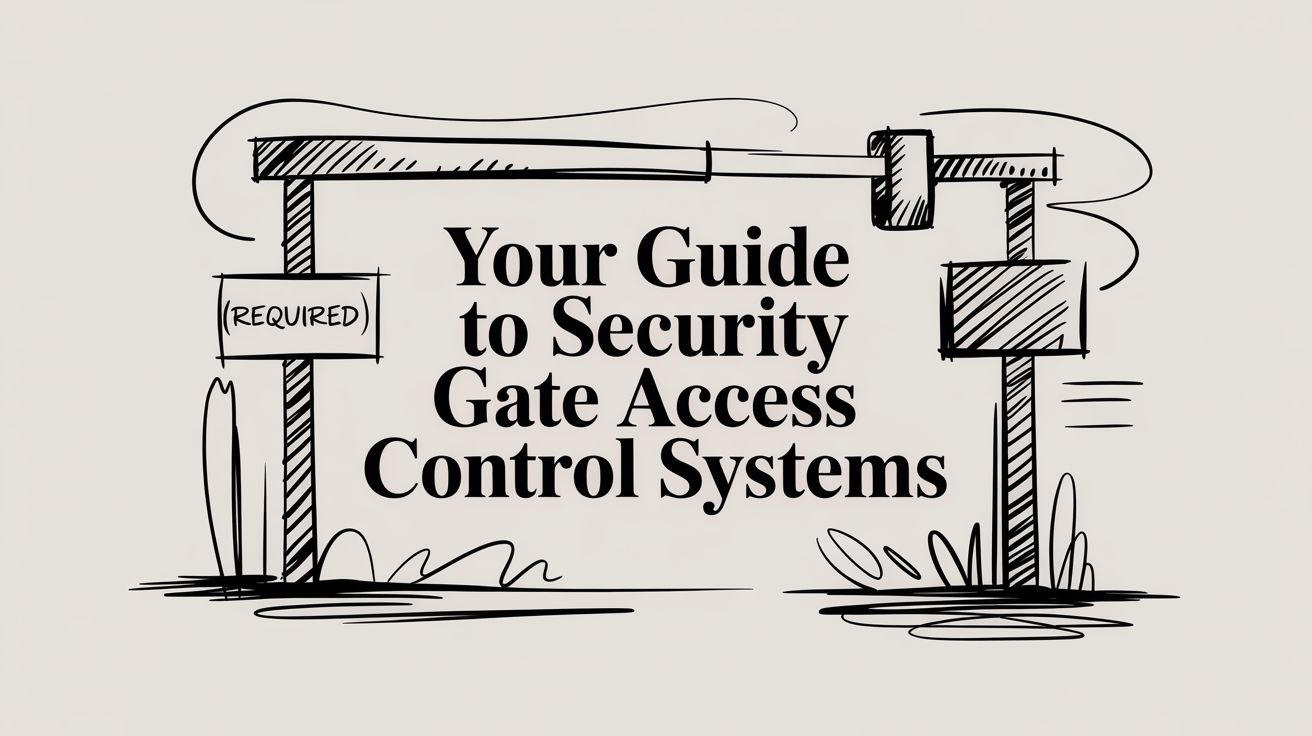
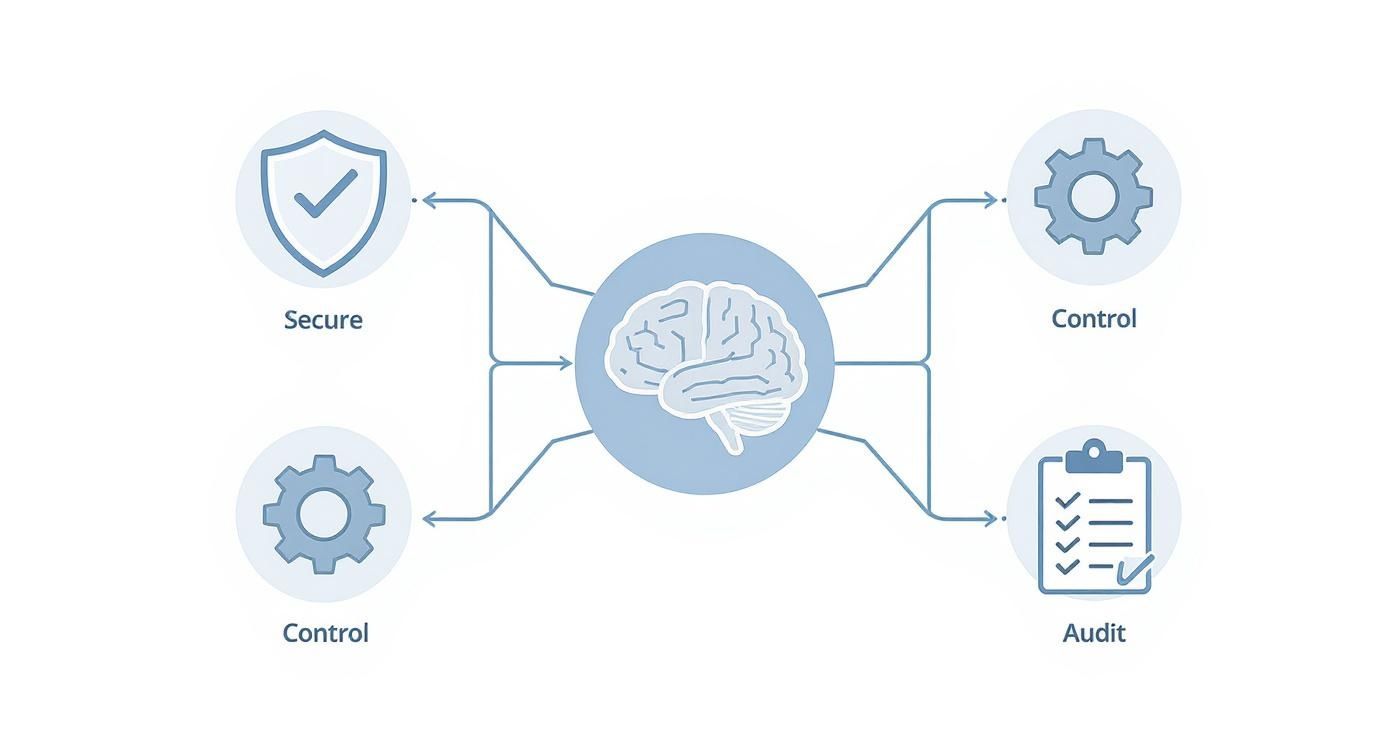
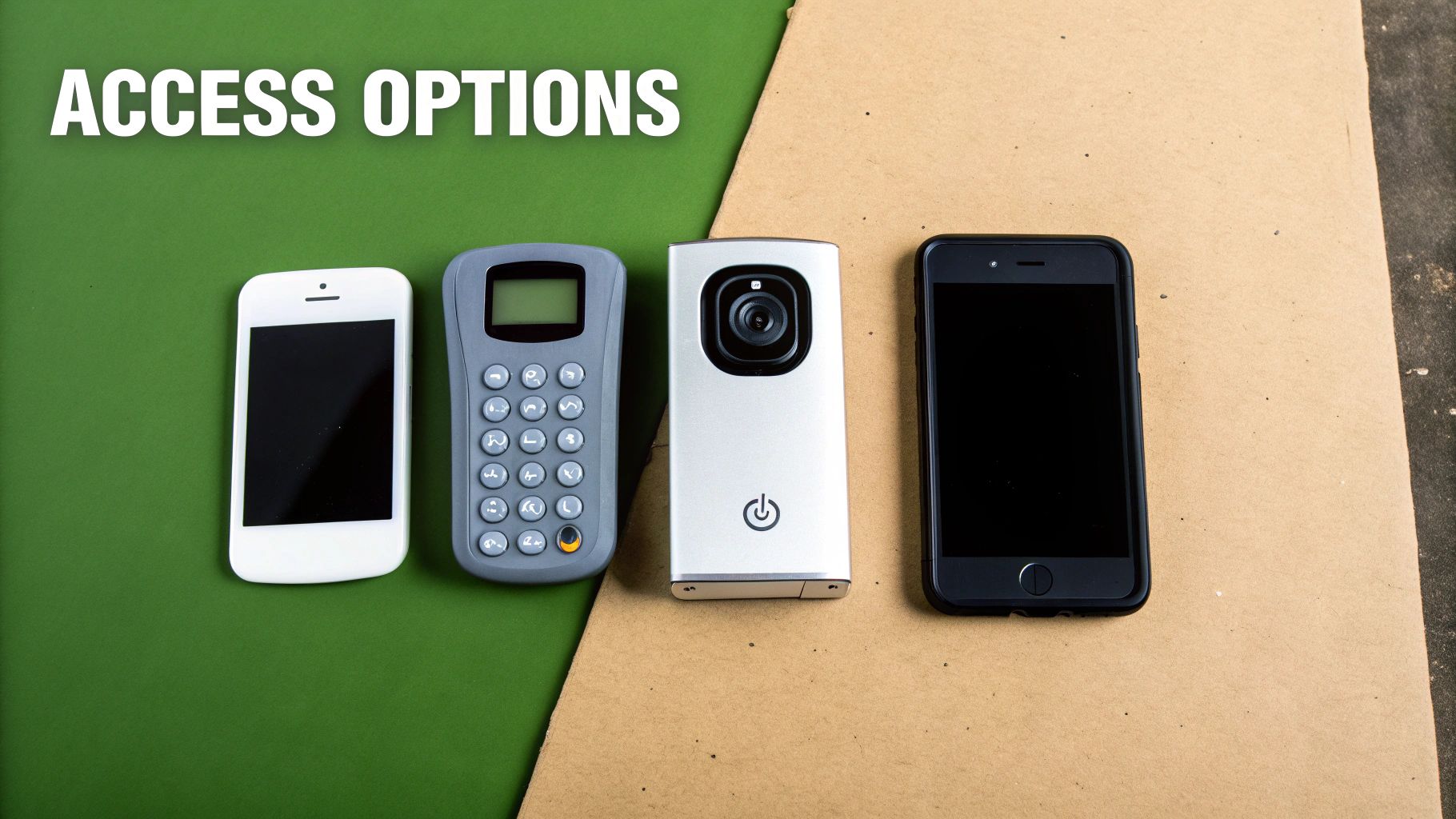
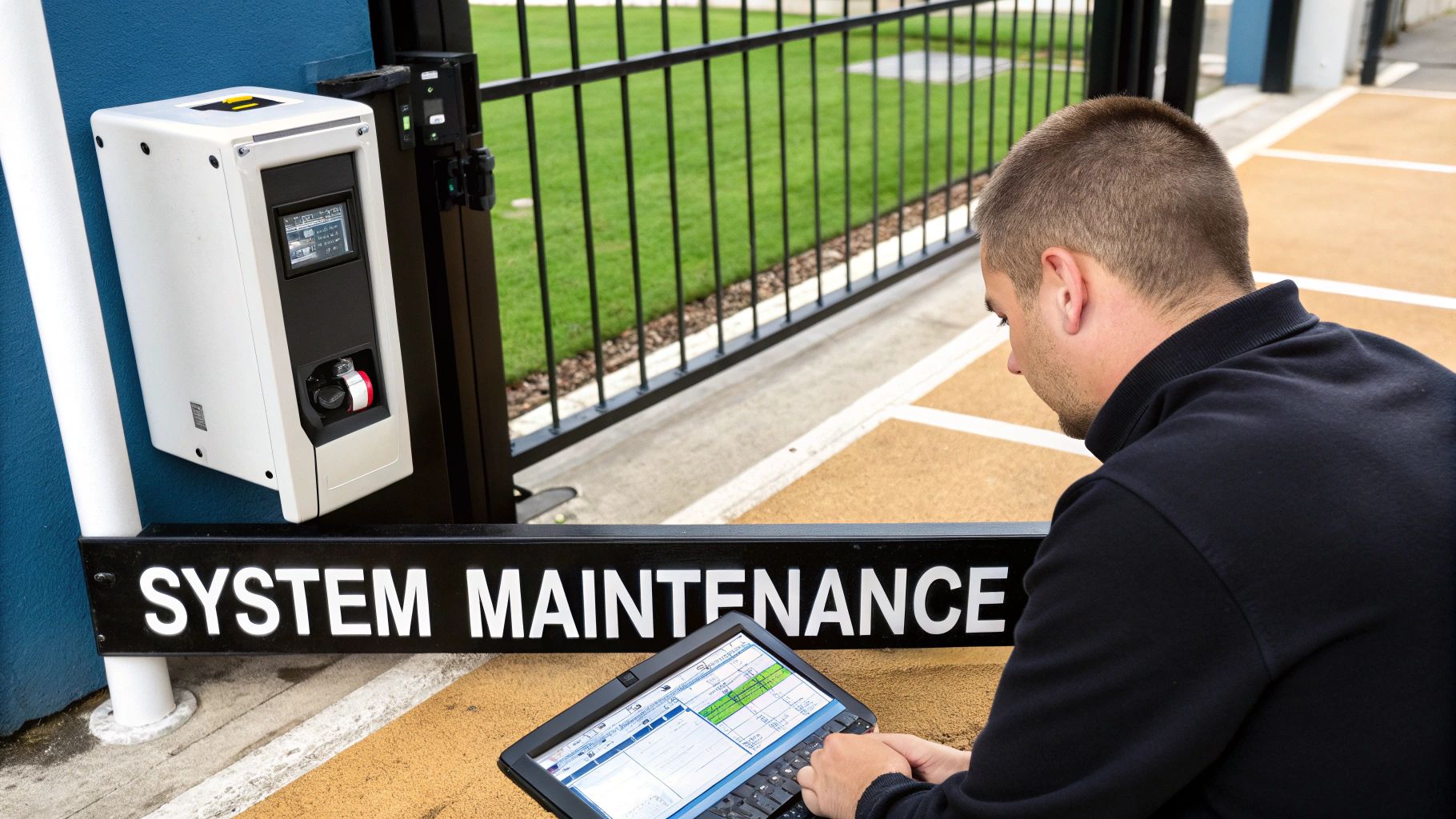

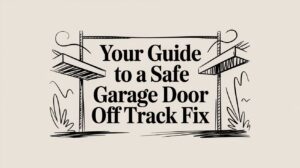


 (480) 548-0807
(480) 548-0807